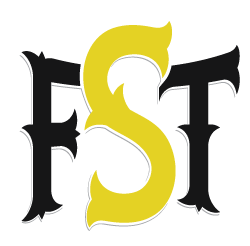SMALL FIRES AND EASY CONNECTIONS
I recently had a fire with Engine 31, which was first due on a single-family house with a detached garage with heavy fire in the back. With Engine 57 out on an MVC and Engine 48 on an Assist Invalid, it put us third up and itching to get our fill on a box we usually wouldn't respond to!
As we pulled up, we quickly noticed that the second due Engine had failed to secure a permanent water supply, so my Driver and Engine 31 worked to hand jack (reverse lay) back to a nearby blue top... but only with a single 3" line.
That was it... not a 5" supply line... just a single 3" back to the hydrant.
Driving Engine 31 was a Veteran FRO who is probably more competent than most Driver Engineers I know. That's not a knock on our Drivers but a testimony that this guy knows his stuff. And so after the fire was knocked down, I noticed that we only had a 3" line supplying us.
My interest peaked. Why would they only drop a 3" supply line with heavy fire showing from a detached garage in the back? Once the lines were picked up, I had to ask, "Hey Coop, talk me through your choice on dropping a 3" vs. 5".
"Simple, this was only ever going to be a two-crosslay fire... tops three if we need an exposure line." He replied.
The house was roughly a 1,200 sq ft single-family dwelling with a detached garage. In theory, even if the whole house was carrying the mail, we could put it out with two well-supplied hand lines if needed.
It was a good lesson in properly sizing up your fire and knowing what it would take to put out that fire load. Too often, we go through the motions and old habits that we always do and forget that each situation requires fresh eyes.
We didn't need a 5" supply line. Again, we might need three handlines, flowing roughly 150 GPM each. That would require around 450 GPM in total, which is a single 3" off a Dallas Blue Top is more than capable of supplying.
Not every fire requires a 5"
Not every fire requires a hydrant. Will a second Engine dumping their tank (giving you 1,000 gallons) be enough?
The goal is for you to become competent and to know what you need and how to deploy it on the fireground.
🚨 DISCLAIMER: Dallas Fire-Rescue does not endorse or promote these videos. The information herein is my best understanding of the material covered and the subsequent views expressed are my own and not necessarily those DFR. These videos are strictly for educational purposes only. It is critical that you follow your department's MOP/SOP, and talk with your Station Officer (and crew) before implementing anything you see here on The Roll Steady.
© 2022 THE ROLL STEADY LLC. ALL RIGHTS RESERVED
PUMP SCHOOL W/ RICK BREWER
TABLE OF CONTENTS

